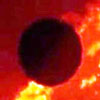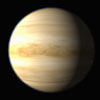On The Venera Probes To Venus
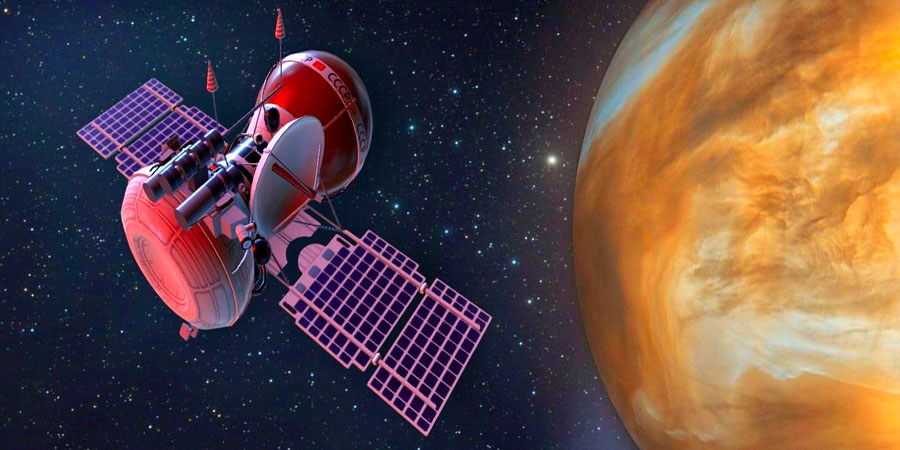 by Ernest L. Norman
by Ernest L. Norman
Los Angeles Times, Dec. 16, 1970—Moscow (AP)—The Soviet Union sent a space capsule plunging into the torrid atmosphere of Venus Tuesday and it transmitted data for 35 minutes, the Tass press agency said. Presumably the craft was destroyed by the heat and pressure before it could land.
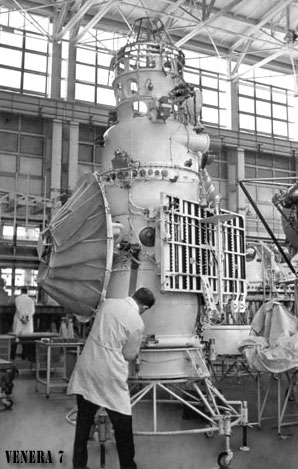 Venus 7, the main spacecraft, was launched Aug. 17 with the announced aim of conducting “studies of the planet”. But its transmitting performance has been outdone three times before by Soviet probes of the planet. Those probes measured the planet’s temperature at about 500 degrees near the surface and its atmospheric pressure at more than 100 times that on earth. Western scientists said those three craft were “crushed like eggs”.
Venus 7, the main spacecraft, was launched Aug. 17 with the announced aim of conducting “studies of the planet”. But its transmitting performance has been outdone three times before by Soviet probes of the planet. Those probes measured the planet’s temperature at about 500 degrees near the surface and its atmospheric pressure at more than 100 times that on earth. Western scientists said those three craft were “crushed like eggs”.
The descent craft of Venus 7 had a shield designed to protect it from pressure of 100 atmospheres and heat of 198 degrees. But Western scientists doubted the shield could withstand the conditions in the planet’s atmosphere.
Other Transmissions: Venus 4, the first to drop a capsule into Venus’ atmosphere, transmitted for 35 minutes in October, 1967. Venus 5 transmitted for 51 minutes and Venus 6 for 96 minutes, both in May, 1969. The Venus 7 transmitter shut off after 35 minutes and there was no indication it still could function.
The United States has never sent a capsule into Venus’ atmosphere, but Mariner 5 in bypassing the bright planet in October, 1967, also found the temperature above 500 degrees and gathered other data.
Tass said Venus 7 sent data that was being processed and studied but gave no indications of findings. The Venus 7 entered the planet’s atmosphere at 8:02 A.M., Moscow time and, on command from ground controllers, the descent craft was separated. After a skip entry into the thick atmosphere, the descent module had slowed to a speed of 820 feet a second. Ground crews then popped open its parachute system. As it floated toward the surface, the instrument-packed module presumably radioed information on the composition of gases and the temperature and pressure. Venus 7 covered the 198.7 million mile distance to the planet in just under four months.
Ground crews maintained close radio contact with the craft throughout its long voyage, making contact 124 times. On Saturday, radio commands from earth set in motion the charging of solar batteries. There apparently was no further contact until Tuesday.
Soviet scientists seem to be as interested in studying the Venusian atmosphere as the planet itself. Nineteen months ago, Venus 5 and 6 missions were abandoned after radio failure during descent. Official announcements claimed success, however, for “the main goal of the experiment”—the gathering of data during the descent.
Western scientists believe those two craft, which reached the planet 24 hours apart, were mutilated by the pressure at 15 miles above the surface. (End of news article)
On December 16, 1970, Moscow announced that its Venus probe satellite #7 had plunged into the Venusian atmosphere. This spacecraft was the fourth of a series of Russian craft to reach Venus and to plunge into its atmosphere.
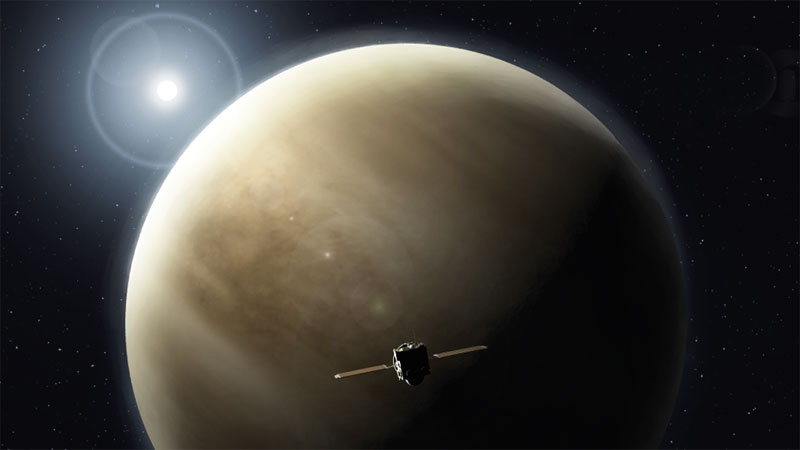 The United States has also had two successful probes: one a proximity circling, while a second actually penetrated the Venus atmosphere. While none of these spacecraft have ever reached the surface of the planet Venus without being totally destroyed, they have radioed back to Earth certain data of particular importance—especially important in that it validates the Unariun Concepts which I have detailed in previous articles.
The United States has also had two successful probes: one a proximity circling, while a second actually penetrated the Venus atmosphere. While none of these spacecraft have ever reached the surface of the planet Venus without being totally destroyed, they have radioed back to Earth certain data of particular importance—especially important in that it validates the Unariun Concepts which I have detailed in previous articles.
Of all data radioed back to Earth there are two or three factors which are most important to our consideration. First: that the temperature on the surface of the planet is believed to be 700 degrees Fahrenheit, hot enough to melt lead; and the atmospheric pressure on the surface is said to be 100 times greater than our own atmospheric pressure of 14.69 lbs. per square inch at sea level. While the atmosphere of Venus is said to be, and looks vaporous—a compound of gases poisonous to Earth life, yet all relatively light in weight as compared to the oxygen-nitrogen Earth atmosphere.
How then does a planet slightly smaller than our Earth achieve an atmospheric pressure one hundred times greater than on our own Earth? And why, also, is there a surface temperature of 700 degrees? The planet is said to have a synchronous revolution and, like the Earth-moon relationship, always presents the same side to the sun.
Current available information does not state which side is hot and which side is cold, as it could reasonably be supposed the dark side would reach 270 degrees minus as does the dark side of the moon. However, rotation of the planet Venus has not been confirmed; or, if there is a revolution, what its exact time would be as compared to the Earth.
In recording these discrepancies, however, important findings still emerge and how they are achieved, contrary to our own existing laws of physics. The answer, of course, lies in the concepts which I have previously presented.
Venus, like the Earth, is actually the nucleus or physical terminus of an interdimensional centrifuge. Within the central centrifuge are two opposite polarities. All differences manifested in Venus or in any other planet arise within the differences of oscillating frequencies, harmonics, isochronisms, etc.
By rereading my previous articles (Advanced Lesson Course – ICCC) some comprehension can be attained as to these processes and will give insight as to why these apparent contradictions exist.
 Also equally apparent are the imaginative disparities of the Earth world scientist. Except in science-fiction stories, he has yet to achieve the reality of life form existence beyond the periph
Also equally apparent are the imaginative disparities of the Earth world scientist. Except in science-fiction stories, he has yet to achieve the reality of life form existence beyond the periph ery of his Earth world forms. In my book, The Voice of Venus, I have described life as it could be easily lived on such a planet; people living in cities constructed of interdimensional energies and in bodies of the same substance, would not be subjected to heat or atmospheric pressures which were third dimensional in nature and were manifestations or products of fourth dimensional cosmic hysteresis.
ery of his Earth world forms. In my book, The Voice of Venus, I have described life as it could be easily lived on such a planet; people living in cities constructed of interdimensional energies and in bodies of the same substance, would not be subjected to heat or atmospheric pressures which were third dimensional in nature and were manifestations or products of fourth dimensional cosmic hysteresis.
It would also be safe to say that if the Earth man ever succeeded in landing himself on the surface of Venus he would not see these cities or their peoples, no more than he can see the wave form transmissions from a television tower until they are resolved into picture formations by his television receiver.
One more apparent enigma is the magnetic field. According to available information the scientist has not yet measured or determined a magnetic field on the planet Venus. The scientist, of course, has not realized that in measuring the Earth’s magnetic field he has only measured a low subharmonic. Venus has a magnetic spectrum proportionately equal to that of the Earth’s, yet, because of differences in certain oscillating transmissions within the interdimensional centrifuge, the Venus magnetic spectrum is, frequency-wise, somewhat different than Earth.
Therefore, instruments used to measure Earth’s magnetic field are out of tune with the Venus magnetic spectrum and can detect nothing when an attempt is made to measure the Venus magnetic field.
So once again, as it has been done innumerable times in the past, man has only added to the total enigma of his existence and, conversely, has validated the total Unariun concept. ~Excerpt from Infinite Concept Of Cosmic Creation
Part II -Further Venera Missions- Update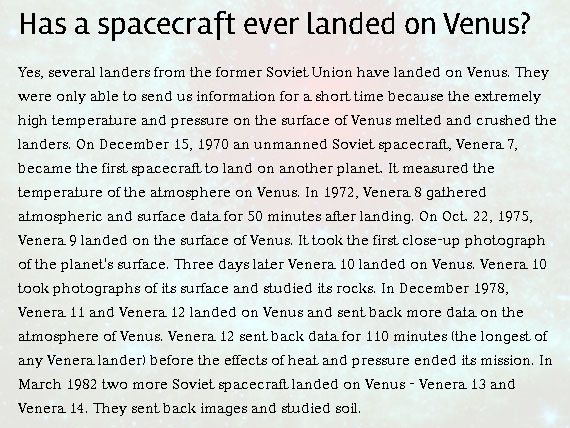
Venera 7 managed to survive its impact, and to even relay a full-strength signal for one second before failure. But computer processing of the radio signals at a later date revealed that the toppled-over Venera 7 probe continued to transmit a weak signal for a full 23 minutes after impact. Data revealed a temperature of around 475° C (878° F) at the surface, along with a pressure of 92 bar and wind speeds of 2.5 meters per second (5.6 mph).
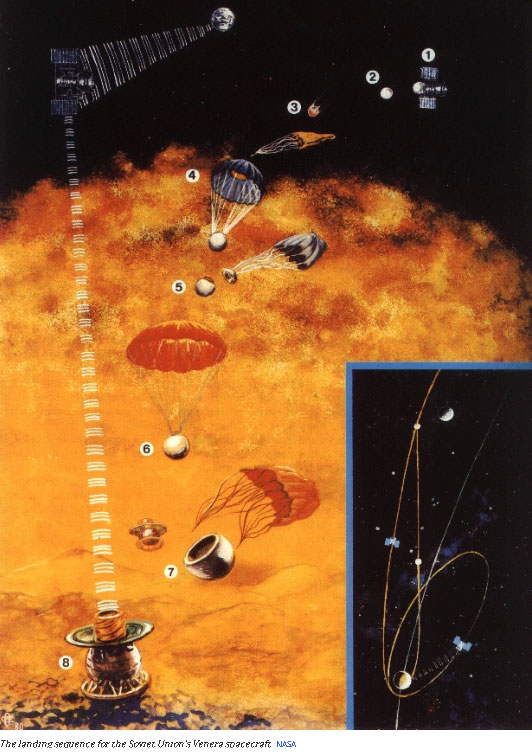 This was the first time a spacecraft had ever transmitted data back to Earth from another planet, a momentous achievement but just a harbinger of scientific discovery on part of the Soviet Union’s Venera probes. In 1975, during a 53-minute transmission, Venera 9 sent back the first ever pictures of another planet’s surface, stunning scientists with its abundance of sharp-edged rock formations.In 1975, during a 53-minute transmission, Venera 9 sent back the first ever pictures of another planet’s surface, stunning scientists with its abundance of sharp-edged rock formations.
This was the first time a spacecraft had ever transmitted data back to Earth from another planet, a momentous achievement but just a harbinger of scientific discovery on part of the Soviet Union’s Venera probes. In 1975, during a 53-minute transmission, Venera 9 sent back the first ever pictures of another planet’s surface, stunning scientists with its abundance of sharp-edged rock formations.In 1975, during a 53-minute transmission, Venera 9 sent back the first ever pictures of another planet’s surface, stunning scientists with its abundance of sharp-edged rock formations.
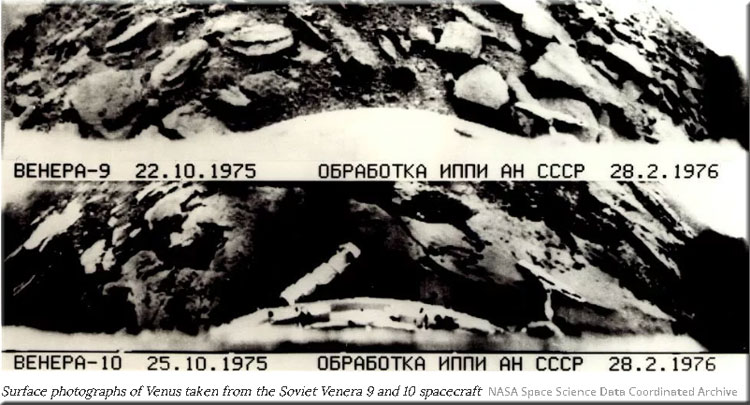
“Even the moon does not have such rocks,” Soviet scientist Boris V. Nepoklonov said in an interview with local broadsheet newspaper Izvestia in response to the imagery. “We thought there couldn’t be rocks on Venus, they would all be annihilated by erosion, but here they are, with edges absolutely not blunted. This picture makes us reconsider all our concepts of Venus.”
In 1982, Venera 13 joined the party and would perhaps return the biggest scientific loot of the Venera probes. This included panoramic photographs and the first ever color photos of another planet’s surface. It also drilled into the surface and analyzed the soil inside an airlock using an X-ray fluorescence spectrometer.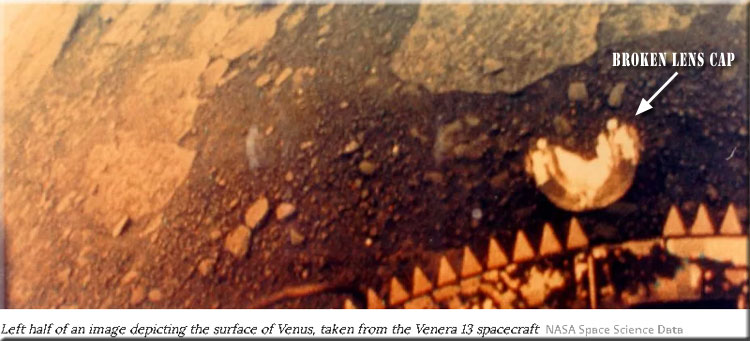 More images from subsequent Missions in no particular order:
More images from subsequent Missions in no particular order: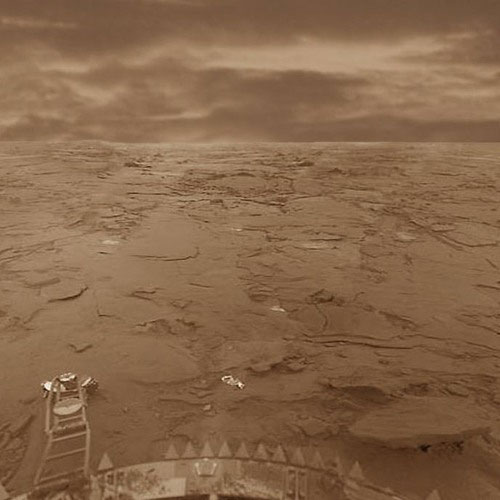
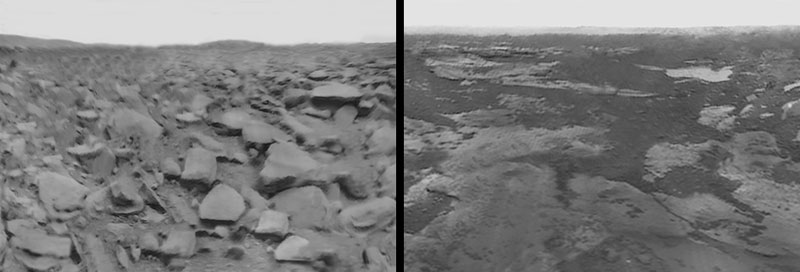
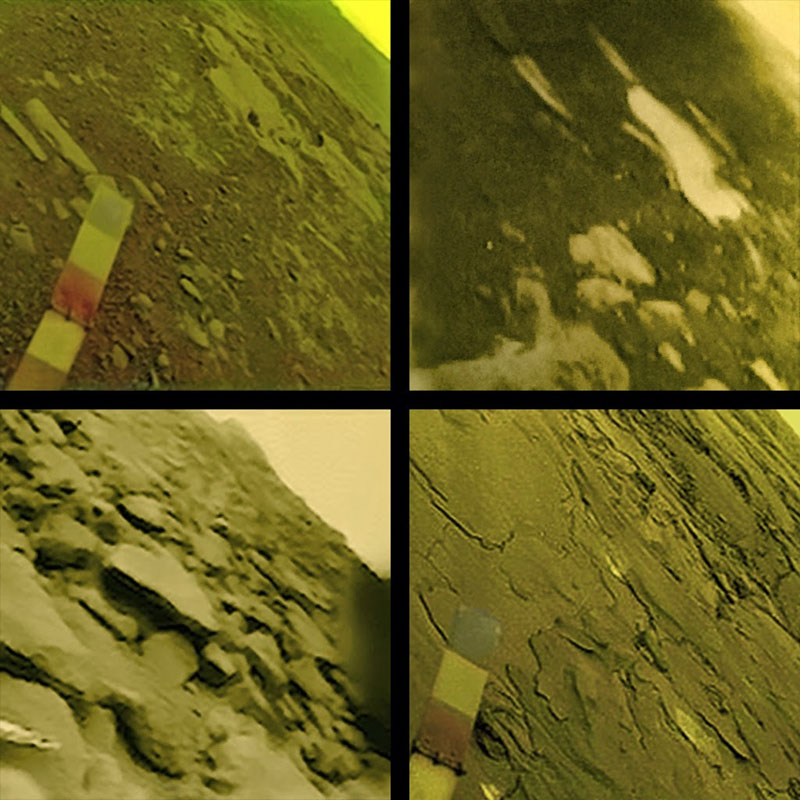
Posted in Book Excerpts, Infinite Concept of Cosmic Creation, Other Topicswith comments disabled.


